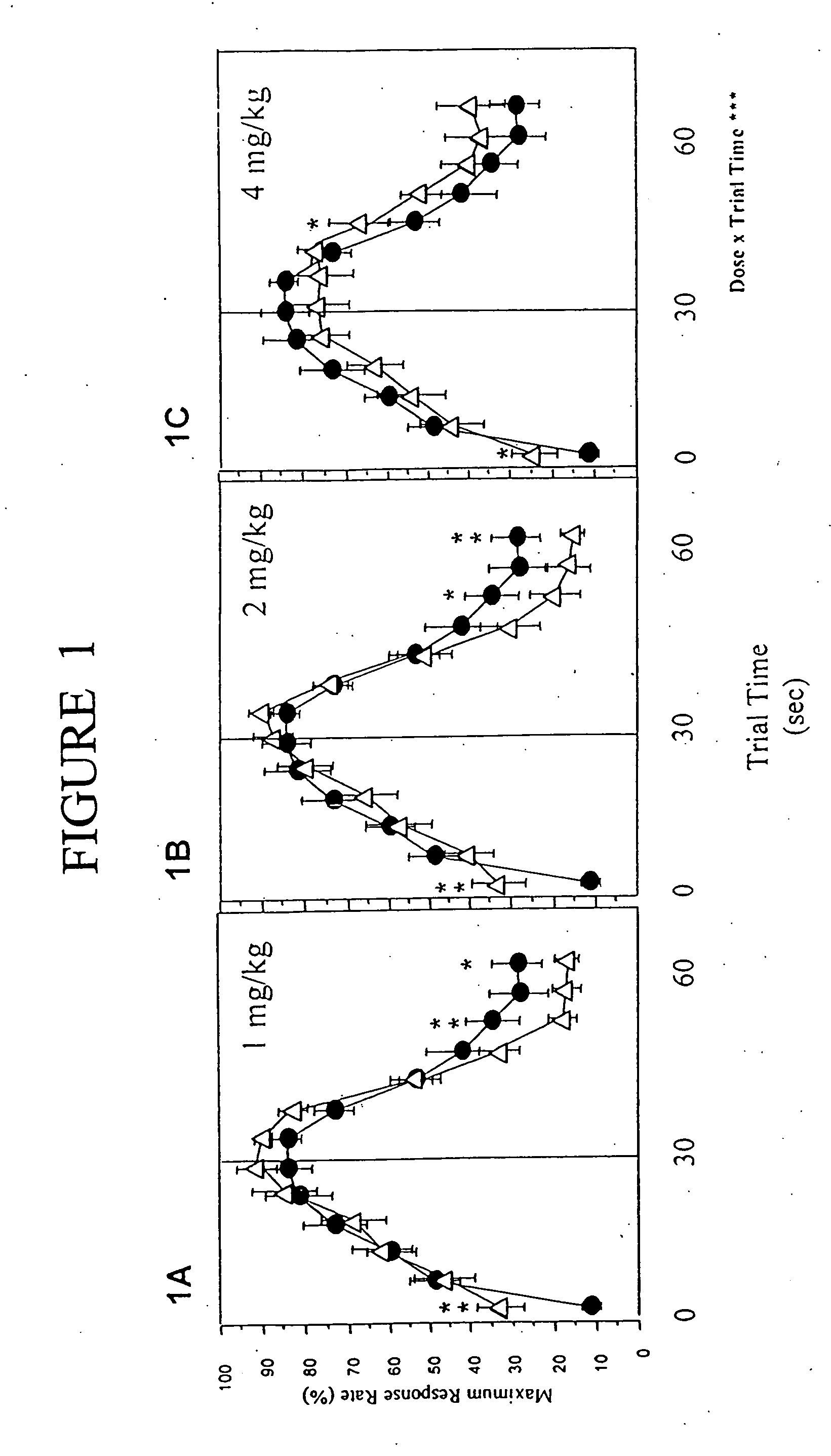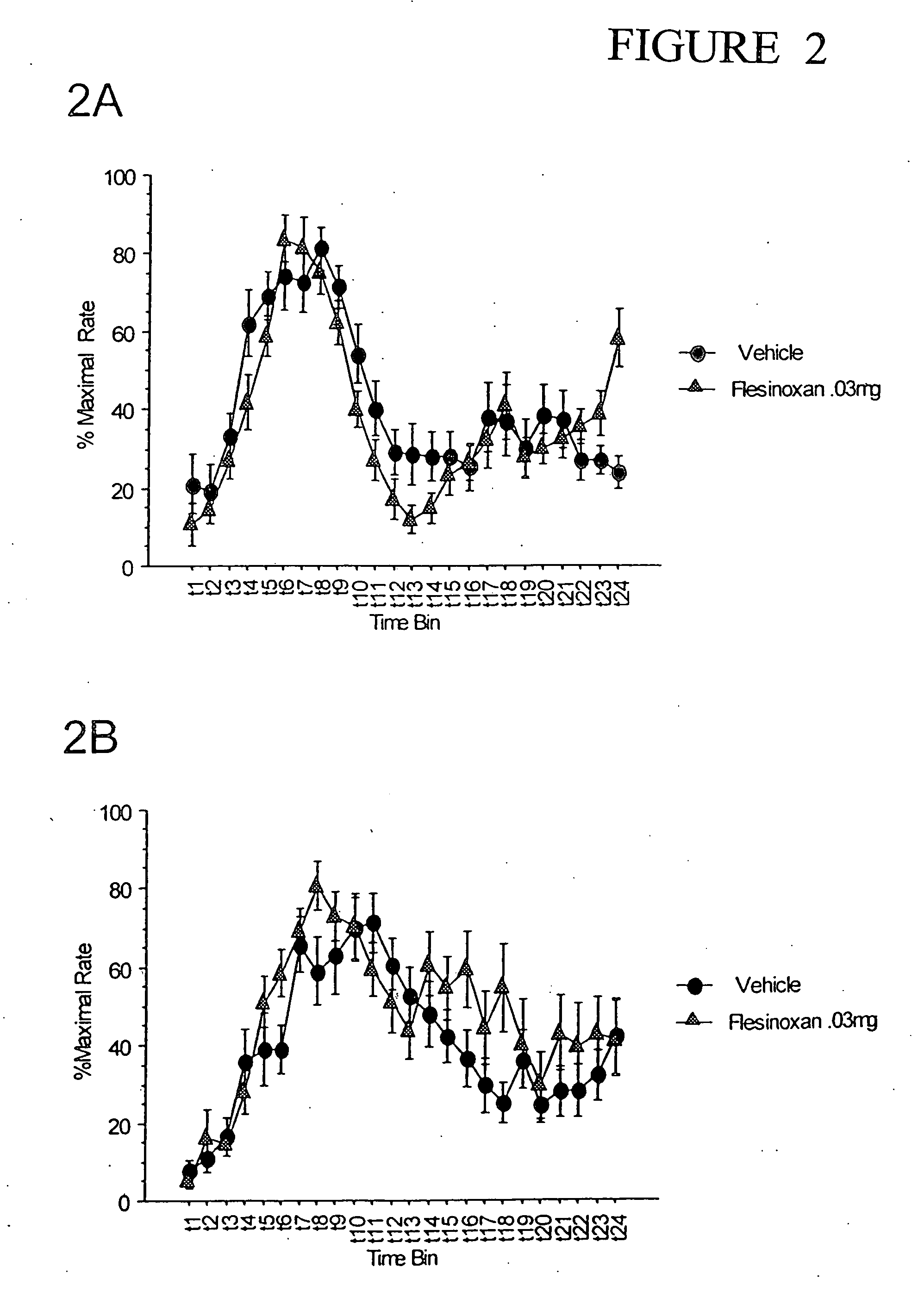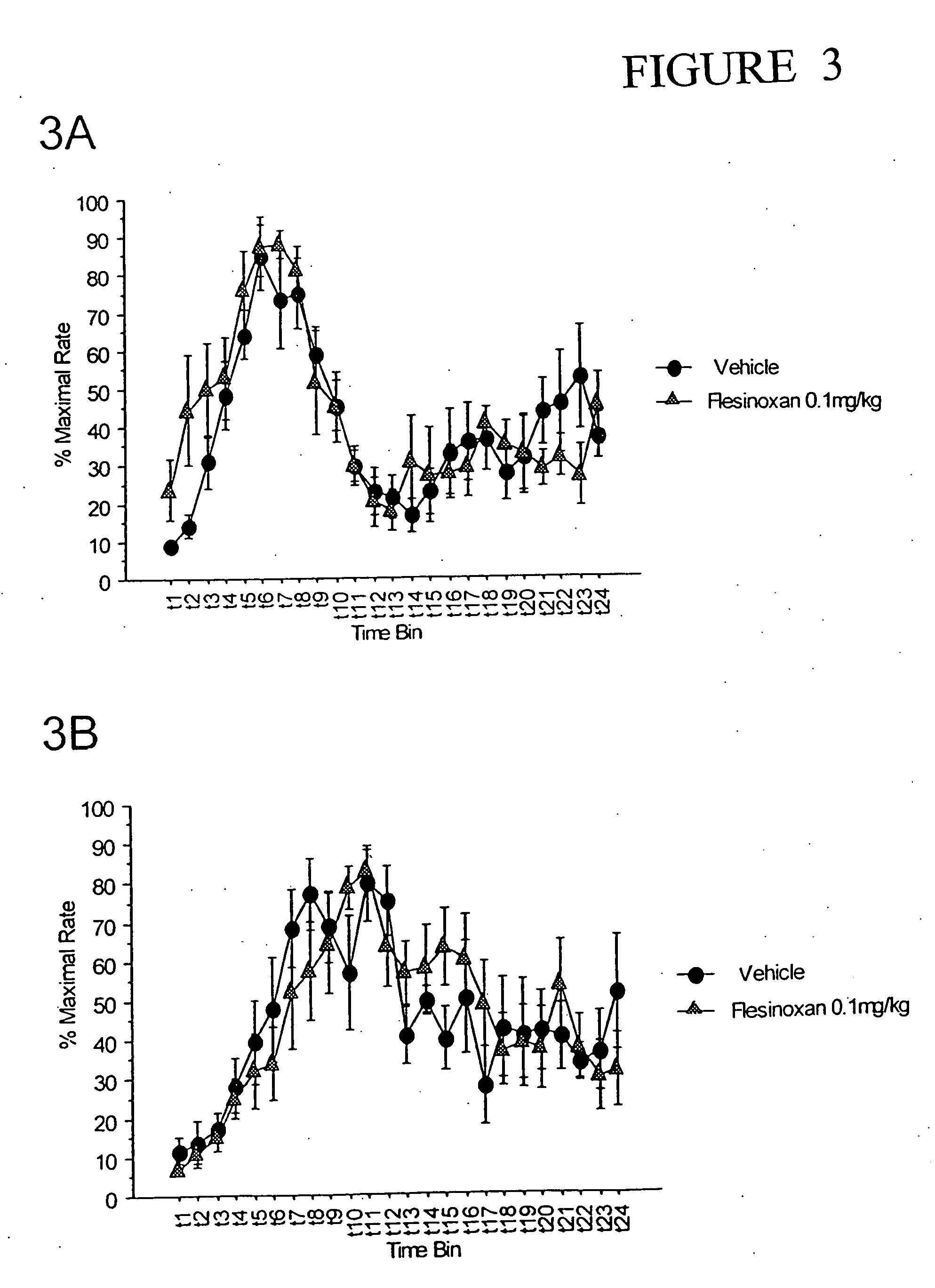Treatment for a attention-deficit hyperactivity disorder
- Summary
- Abstract
- Description
- Claims
- Application Information
AI Technical Summary
Benefits of technology
Problems solved by technology
Method used
Image
Examples
example 1
The peak procedure is a behavioral model designed to assess an animal's ability to learn an appropriate time period in which to perform a task and a time period in which the animal will be rewarded if the task is performed. The model provides information concerning excitatory and inhibitory components of behavior, as subjects must respond to perform a task when appropriate and stop responding in an “empty trial” when time for reward has elapsed and the reward has not been delivered. The task is sensitive to conditions where there is a failure in inhibitory mechanisms, such as seems to be the case for ADHD (Pliszka et al., Biol. Psychiatry, 48:238-46, 2000).
In the peak procedure, mice are trained to work for food that is delivered at the same time in each trial, but withdrawn in some unreinforced trials. Typically, the response rate increases up to a maximum around the reinforcement time, and then decreases to a low toward the end of the trial. The shape of the response rate indic...
example 2
The following results were obtained using the methods described in Example 1, but with two different doses of the 5-HT1A agonist flesinoxan (+)(4-fluoro-N-[2-[4-[2-(hydroxymethyl)-1,4-benzodioxane-5-yl]1-piperazinyl]ethyl]benzamide). After 4 weeks of training in the double PIP procedure, mice were tested with flesinoxan. Flesinoxan was dissolved in distilled H2O and injected to half the mice in a low dose (0.1 mg / kg) or a lower dose (0.03 mg / kg), whereas the other subjects were injected with vehicle.
FIG. 2 demonstrates increased attentive behavior at the “lower” dose of flesinoxan. In the PIP 30 s, 0.03 mg / kg flesinoxan, the peaks of the response curve is higher and the curves are sharper than vehicle. This effect is evident but less robust in the PIP 45 s schedule, indicating that the more robust effect observed at the PIP 30 s could be attributable to a positive effect on attentional processes in contrast to a more central enhancing effect on information processing, which should...
example 3
The following results were obtained using the methods described in Example 1. After 4 weeks of training in the double PIP procedure, mice were tested with the 5-HT1A agonist 8-OH-DPAT. 8-OH-DPAT was dissolved in distilled H2O and injected to half the mice in a low dose (0.1 mg / kg), whereas the other subjects were injected with vehicle. After 3 days of washout, the treatments were reversed and a Latin Square design was completed except that the mice previously treated with drug were treated with vehicle and those mice treated previously with vehicle were administered a lower dose of 8-OH-DPAT (0.01 mg / kg). After 2 days of washout, the Latin Square design was completed at the 0.01 mg / kg dose.
FIG. 4 demonstrates that at both 0.1 mg / kg and 0.01 mg / kg 8-OH-DPAT, the performance curves were not significantly different from the saline curve both in the PIP 30 s and PIP 45 s (FIGS. 4A and 4B, respectively). ANOVA revealed no dose main effect or dose×trial time interaction. The 0.01 mg / kg ...
PUM
| Property | Measurement | Unit |
|---|---|---|
| Mass flow rate | aaaaa | aaaaa |
| Mass flow rate | aaaaa | aaaaa |
| Mass flow rate | aaaaa | aaaaa |
Abstract
Description
Claims
Application Information
 Login to View More
Login to View More - R&D
- Intellectual Property
- Life Sciences
- Materials
- Tech Scout
- Unparalleled Data Quality
- Higher Quality Content
- 60% Fewer Hallucinations
Browse by: Latest US Patents, China's latest patents, Technical Efficacy Thesaurus, Application Domain, Technology Topic, Popular Technical Reports.
© 2025 PatSnap. All rights reserved.Legal|Privacy policy|Modern Slavery Act Transparency Statement|Sitemap|About US| Contact US: help@patsnap.com



